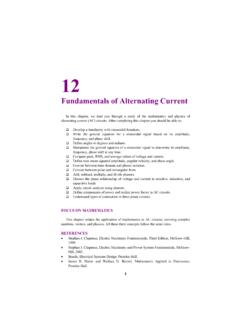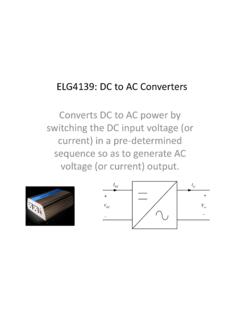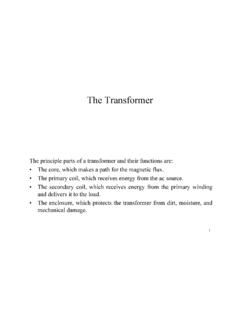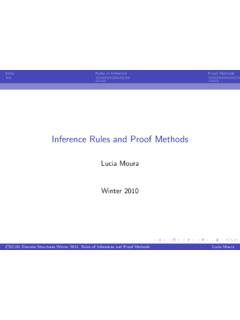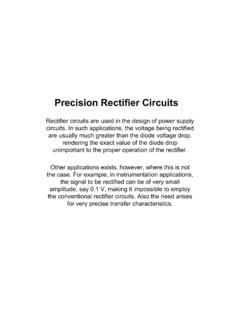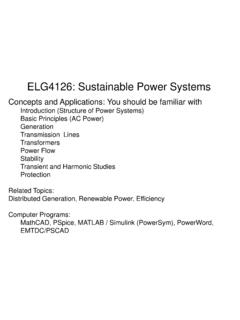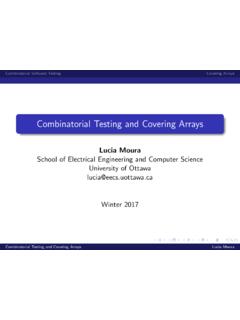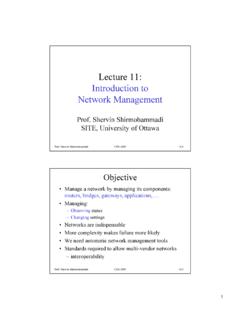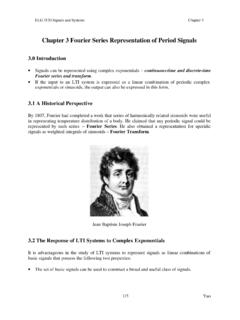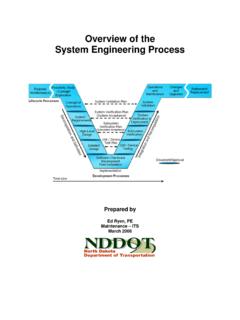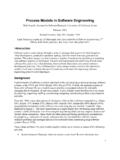Transcription of Basics : the Requirements Engineering Process
1 SEG3101 (Fall 2010). Basics : the Requirements Engineering Process Gregor v. Bochmann, University of Ottawa Based on Powerpoint slides prepared by Gunter Mussbacher with material from: Sommerville & Kotonya 1998, Lethbridge & Lagani re 2001-2005, Hooks &. Farry 2001, Bray 2002, Pressman 2005, Amyot 2005-2009, Som 2008. Requirements within the software development Process 2. SEG3101 (Fall 2010). Basics the RE Process . Failures Requirements Definition/Importance Requirements Types Development Process Requirements Activities What is the right system to build ? 3. SEG3101 (Fall 2010). Basics the RE Process . Table of Contents The Requirements Engineering Process Problem Domain and the System/Software-to-be Requirements Engineering : Main Activities The beginning is the most important part of the [1] Plato, 4 4.
2 SEG3101 (Fall 2010). Basics the RE Process . The Requirements Engineering Process RE activities and documents (Wiegers). 6. SEG3101 (Fall 2010). Basics the RE Process . Notes on previous slide There needs to be an arrow from User Requirements to System Requirements . (The system has to be able to perform certain use cases. The same use cases must be supported by the software, therefore become Software Requirements .). Business rules (including standards and regulations) are not only non-functional, they also include functional aspects (as shown by the arrows in the diagram). 7. SEG3101 (Fall 2010). Basics the RE Process .
3 RE Process model (suggested by Bray). Again, this diagram shows RE activities (elicitation, analysis, specification, HMI design). subsequent design activity (internal design). RE documents ( Requirements , specification, HMI specification). Important point: Distinction between Problem domain (described by requ. doc.). System (to be built) (described by spec. doc.). Note: one has to distinguish between current (problematic) version of the problem domain, and the projected future version which includes the system to be built. 8. SEG3101 (Fall 2010). Basics the RE Process . Failures Requirements Definition/Importance Requirements Types Development Process Requirements Activities Typical Layered Approach (V-shaped).
4 Source: Hull, Jackson, Dick: Requirements Engineering , 2004. 9. SEG3101 (Fall 2010). Basics the RE Process . Notes on previous slide This looks like the waterfall Process model, but this diagram describes a quite different situation. The layers correspond to step-wise refinement in terms of component decomposition. For instance, the transition from the first to the second layer is the typical RE Process : one starts with the information from elicitation (shown in the first layer), that is, the problematic domain model, and one ends up with a proposal for a new system to be built (which is a component within the projected new domain model).
5 Important note: The Process of identification of the system to be built and defining its relationship with the new domain model (note that the environment of the system to be built may also be re-organized within the new domain model) is a kind of design Process that requires creativity. The transitions to the lower layers in the diagram are similar processes (you may call them RE at a more detailed level or design processes) 10. SEG3101 (Fall 2010). Basics the RE Process . Difference between RE and design ?? Much research towards automated SE. Compilers automatically generate machine code (correct in respect to program source code).
6 CASE tools automatically generate implementations of UML State Machine models (correct in respect to given model). CASE tools automatically generate state machine models from a set of use case scenarios PhD work of Dr. Som . Tool for Live Sequence Charts by Dave - described in the book Come, Let's Play: Scenario-Based Programming Using LSCs and the Play- Engine . 11. SEG3101 (Fall 2010). Basics the RE Process . Harel's scenario-based programming (1). Scenarios (use cases) are played into the tool, and may be played out for testing the recorded behavior model. 12. SEG3101 (Fall 2010). Basics the RE Process . Harel's scenario-based programming (2).
7 Main idea: eliminate the design and implemention activities by providing efficient execution of behavior directly defined by the Requirements . 13. SEG3101 (Fall 2010). Basics the RE Process . Failures Requirements Definition/Importance Requirements Types Development Process Requirements Activities Requirements and Modeling go together The systems Engineering sandwich! Source: 14. SEG3101 (Fall 2010). Basics the RE Process . Comments on previous slide Why combining RE with modeling ? For analysis models help to understand the problem domain For documentation models can be used for describing Requirements (instead of solely using natural language).
8 We will come back to various modeling approaches later in this course. 15. SEG3101 (Fall 2010). Basics the RE Process . Failures Requirements Definition/Importance Requirements Types Development Process Requirements Activities Back to the Sandwich consider different levels of details Source: Hull, Jackson, Dick: Requirements Engineering , 2004. 16. SEG3101 (Fall 2010). Basics the RE Process . Failures Requirements Definition/Importance Requirements Types Development Process Requirements Activities Benefits of Requirement Levels (Sandwich). Principle of step-wise refinement: Focus the attention on the big picture before addressing the details Reduce the number of changes by specifying at a lower level the Requirements that will not affect the Requirements at a higher level Promote the division of work This diagram [Lamsweerde] is another way to present this kind of (spiral) Process 17.
9 SEG3101 (Fall 2010). Basics the RE Process . Failures Requirements Definition/Importance Requirements Types Development Process Requirements Activities RE Process and Related Activities Why? Identify Business Needs and Goals What? Derive User & Functional Requirements Time How? Design Solutions TIME. Who? When? Project Management Process If-Then Risk Management Process Does It? Quality Management Process Where? Component & Configuration Management Process 18. SEG3101 (Fall 2010). Basics the RE Process . Failures Requirements Definition/Importance Requirements Types Development Process Requirements Activities Requirements Engineering Requirements Engineering is a set of activities but not necessarily a separate phase Source: Donald C.
10 Gause, Risk Focused Requirements Management, Tutorial at RE'09, September 2009. 19. SEG3101 (Fall 2010). Basics the RE Process . The Problem Domain and the System/Software-to-be Failures Requirements Definition/Importance Requirements Types Development Process Requirements Activities Problem Domain The problem domain is the context for Requirements Part of the world within which the problem exists Needs to be understood for effective Requirements Engineering Domain model Set of properties assumed / believed to be true about the environment Properties relevant to the problem Problem domain Requirements should hold in the proposed new version of the domain.
